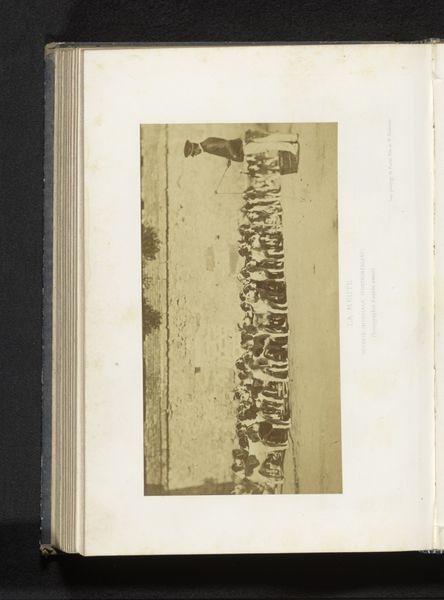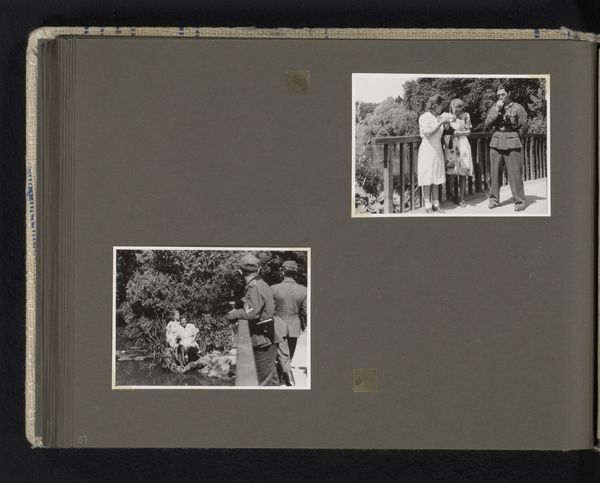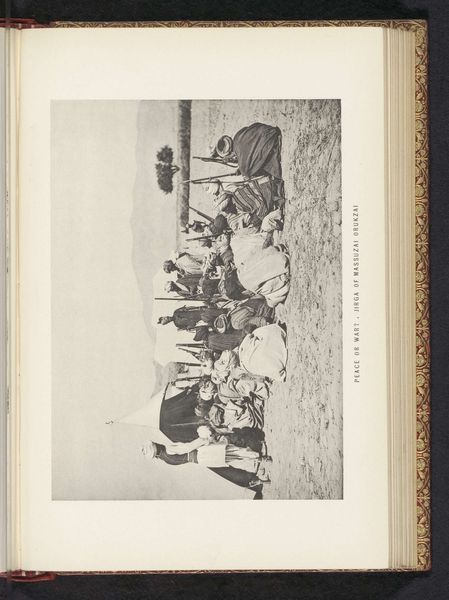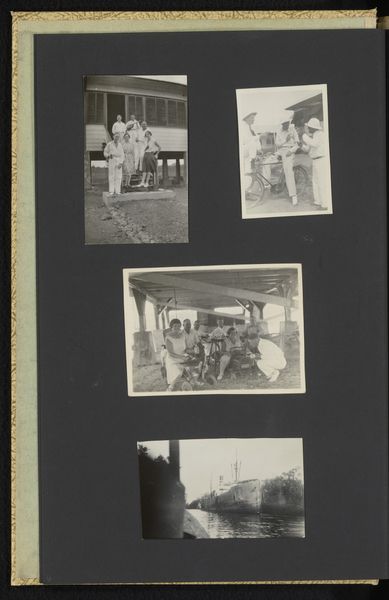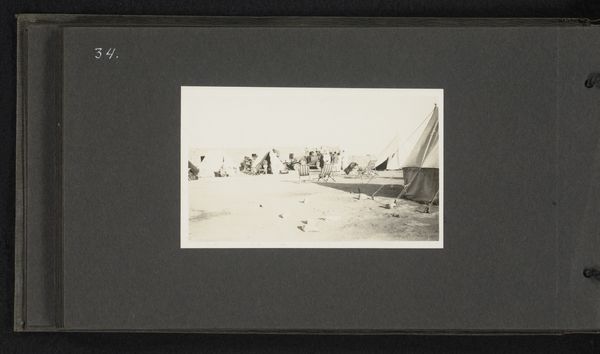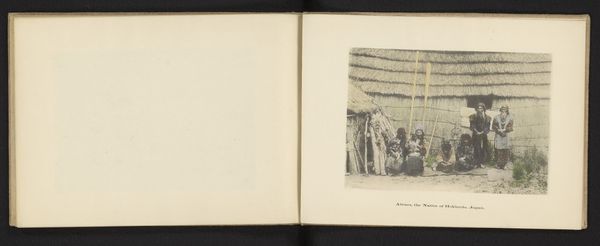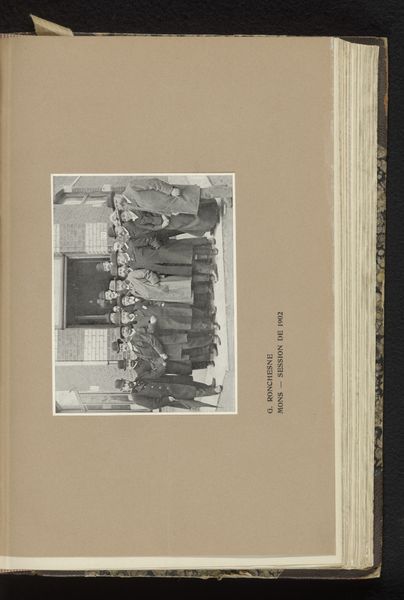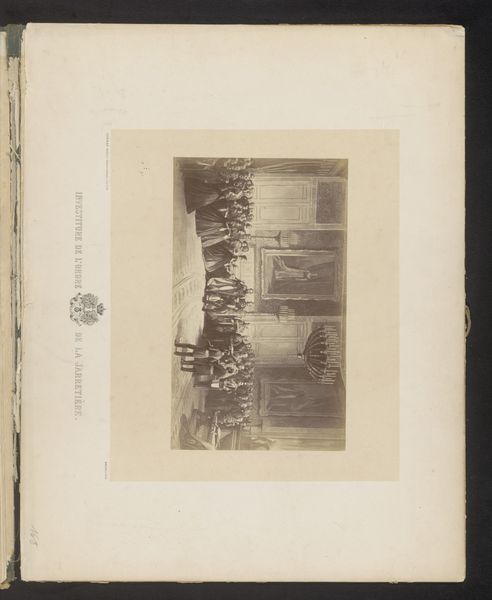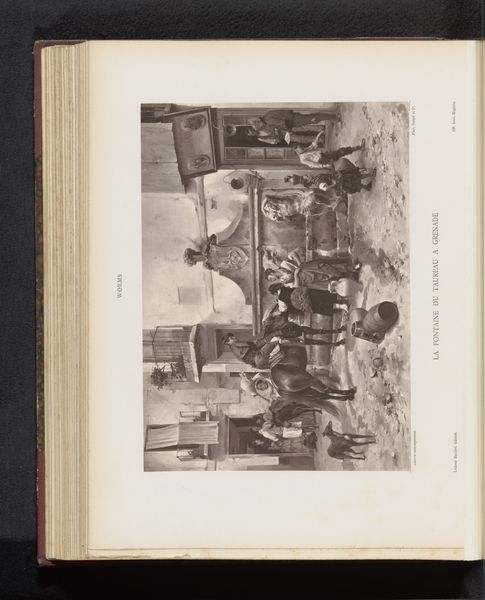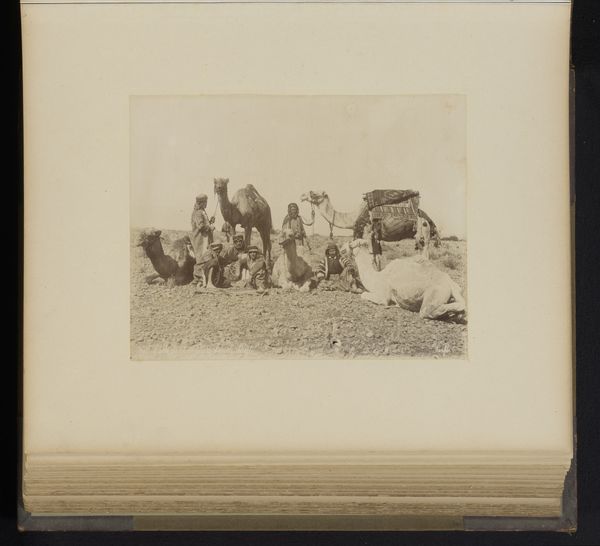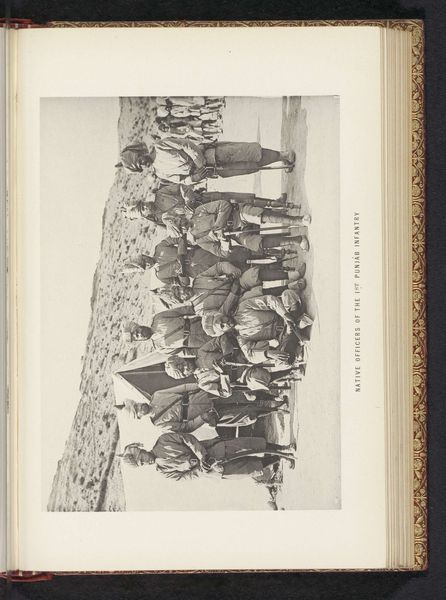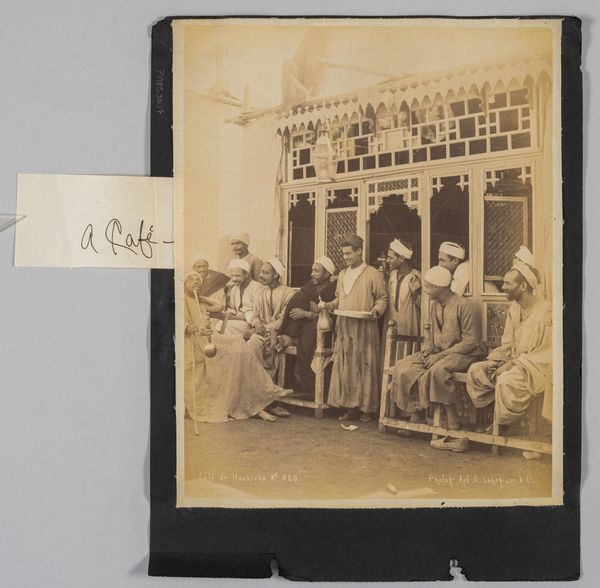
Europese en Noord-Afrikaanse personen op de grens tussen Algerije en Tunesië, Tamerza Possibly 1927
0:00
0:00
print, photography, gelatin-silver-print
#
portrait
# print
#
landscape
#
photography
#
orientalism
#
gelatin-silver-print
Dimensions: height 111 mm, width 68 mm, height 125 mm, width 210 mm
Copyright: Rijks Museum: Open Domain
Editor: So this gelatin-silver print is titled "Europese en Noord-Afrikaanse personen op de grens tussen Algerije en Tunesië, Tamerza," possibly from 1927 by A.G.A. van Eelde. It strikes me as a seemingly objective snapshot, but I can't help wonder about the dynamics at play in this border region. How do you interpret this work? Curator: This photograph, while appearing straightforward, opens up a critical lens onto the colonial gaze and the construction of identity at the intersection of Europe and North Africa. The presence of both European and North African figures at a border immediately signals power dynamics. What assumptions might be embedded in the act of visually documenting this liminal space, particularly through the lens of a European photographer? Editor: That makes sense. I hadn't thought about the photographer's perspective so much. Does the 'orientalism' tag relate to what you're saying about a power dynamic? Curator: Precisely. Orientalism, as a concept, highlights how the "Orient" was often depicted by Western artists as exotic, mysterious, or even inferior. The very act of categorizing people and landscapes can reinforce stereotypes. Who has the power to represent whom, and to what end? Consider, too, how notions of race, class, and national identity intersect in this border region, shaping the lived experiences of the people portrayed. How are they positioned in relation to one another and to the land? Editor: That’s a really insightful way to look at it. It's definitely much more complex than just a picture of people at a border. I'll remember to consider the power dynamics when examining photographs like these in the future. Curator: Indeed. Recognizing the photographer’s role as an interpreter, rather than simply a recorder, encourages us to critically analyze the layers of meaning embedded within seemingly simple representations. I think that's how we find richer readings of art and photography.
Comments
No comments
Be the first to comment and join the conversation on the ultimate creative platform.

